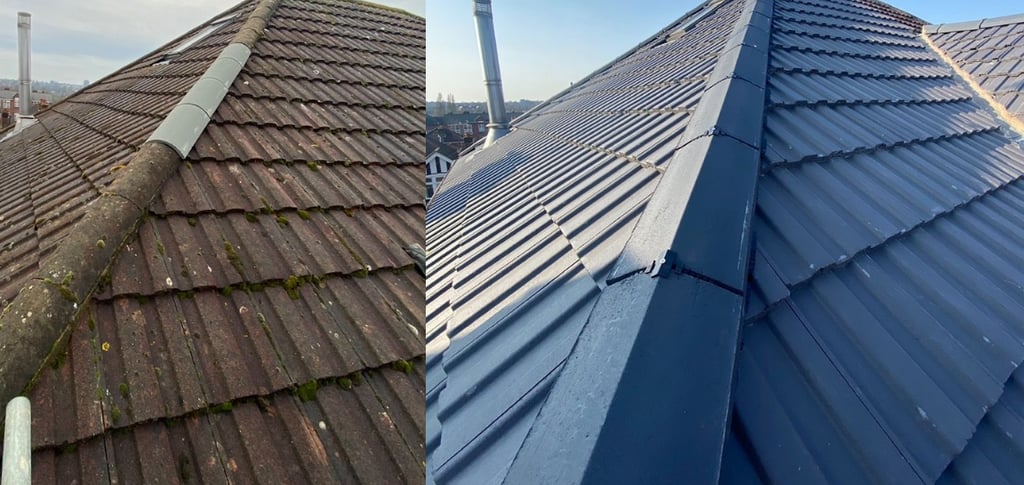Roofing Repair & Installation Guide UK 2025 – Costs, Materials & Rules
UK roofing repair & installation guide for 2025. Discover costs, roofing materials, building regulations, and expert tips to keep your home safe and dry.
7/6/20253 min read


Roofing Repair and Installation Guide UK 2025 – Costs, Tips & Regulations
Your roof is your home’s first line of defence against the unpredictable UK weather—from wind and rain to snow and summer heat waves. Whether you’re planning a full roof replacement, a new installation for an extension, or emergency repairs, it pays to understand how roofing works in 2025.
In this guide, you’ll find practical advice on roof repairs, new roof installation, average costs, materials, building regulations, and tips for choosing trusted roofing contractors in the UK.
Why Proper Roofing Matters
A roof in good condition:
Protects your structure from leaks, dampness, and rot.
Improves your home’s energy efficiency and insulation.
Maintains your home’s market value and kerb appeal.
Meets UK building regulations, keeping you compliant when selling or extending.
Ignoring roof problems can lead to bigger, more costly structural damage—so proactive maintenance is always the smart choice.
Common Roofing Problems in the UK
Roofing issues UK homeowners face most often:
Missing or slipped tiles/slates due to storms.
Leaking flat roofs, especially on extensions or dormers.
Blocked or damaged gutters causing damp walls.
Sagging or rotting roof timbers.
Poor insulation or ventilation, leading to condensation and mould.
Roofing Repairs—What to Expect
Minor Repairs:
Replacing broken tiles, repointing chimney stacks, sealing flashing, or patching up a flat roof.
Moderate Repairs:
Replacing underlay felt, treating rotten timbers, and fixing leaks around roof windows or valleys.
Major Repairs or Re-Roofing:
Full strip and re-tile, replacing rafters, installing new insulation, or upgrading to modern materials.
Tip: Small repairs now can save thousands later. Don’t put off fixing visible damage!
New Roof Installation—Key Considerations
If you’re adding an extension or loft conversion, or your old roof is beyond repair, here’s what you’ll need to think about:
Roof Type & Design
Pitched Roof: Tiles or slates on a pitched angle—classic, durable, and good for drainage.
Flat Roof: Cheaper for extensions but needs high-quality materials to avoid leaks.
Green Roof: Popular in cities—adds insulation, biodiversity, and visual appeal.
Roofing Materials in 2025
Pitched Roofs:
Clay tiles—traditional look, long lifespan.
Concrete tiles—cost-effective and durable.
Natural slate—premium, beautiful, and long-lasting.
Synthetic slate—Lightweight and easier to install.
Flat Roofs:
EPDM rubber—flexible and long-lasting.
GRP Fibreglass—Durable and seamless.
Bitumen felt—budget-friendly, but shorter lifespan.
Insulation & Ventilation
Under new UK building regulations, your roof must meet minimum standards for thermal efficiency. Proper insulation cuts energy bills and reduces carbon footprint.
Don’t forget ventilation—good airflow prevents condensation and damp buildup in lofts.
Roofing Costs UK 2025 – What to Budget
Roofing prices vary by size, design, material, and location. Here’s what homeowners can expect this year:
Minor tile repairs: £150–£500
Flat roof patch repairs: £300–£1,000
Full flat roof replacement: £1,500–£4,000
New pitched roof (semi-detached): £6,000–£12,000
New slate roof (detached): £12,000–£20,000+
Extra costs can include
Scaffolding: £600–£1,200+
Insulation upgrades
Gutter and fascia replacements
Chimney or leadwork repairs
Tip: Always get at least three quotes from trusted roofers and check reviews.
UK Building Regulations for Roofing
When repairing or replacing more than 25% of a roof, UK Building Regulations apply. You must ensure:
The roof structure is strong enough to carry new loads.
Proper insulation (Part L).
Safe ventilation to avoid condensation.
Compliance with fire safety standards.
Correct drainage for rainwater.
Choosing a Reliable Roofer in the UK
✅ Check accreditations: Look for members of NFRC (National Federation of Roofing Contractors) or CompetentRoofer.
✅ Ask for insurance: Public liability insurance and guarantees for work.
✅ Read reviews: Local recommendations matter.
✅ Get a written quote: Always agree on price and timescales upfront.
✅ Don’t pay in full upfront: Staged payments protect you and the contractor.
Final Thoughts
Whether you’re patching up after a winter storm, planning a brand-new roof for your extension, or investing in a total re-roof, your roof is not a corner to cut.
Regular inspections, quick repairs, and quality materials are your best insurance against leaks, dampness, and costly structural issues down the line.
So if 2025 is the year you look up, make sure your roof is up to scratch, compliant, energy-efficient, and built to protect your home for decades.